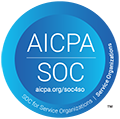Virtually every day, I encounter an MSA where the use of opioids has affected not only the cost of settlement, but has impacted quality of life, and even reduced life expectancy as a result of the side effects that often occur with long term opioid use. In each situation, I find myself asking the same question, “Could this have been avoided?” I want the answer to be a resounding “YES”, but when I look at the history of the claim, I find so many different paths taken through the years of treatment, it’s difficult to find the single turning point that took both patient and claim in the wrong direction.
Today I ran across a study that reminded me of a basic problem solving pillar I learned from my early IT days.
When troubleshooting a logic problem, shortcuts rarely work. We must go back to the beginning.
Back to the Beginning
In a recent article published by the Mayo Clinic, a team of researchers headed up by anesthesiologist, Dr. Michael Hooten, studied how many patients prescribed an opioid for the first time progressed to long term prescriptions, even to the point of addiction. The answer: 1 in 4 people. In its findings, the researchers noted that people with histories of nicotine and past substance abuse were likeliest to use opioid pain medications long term.
Researchers used the National Institutes of Health-funded Rochester Epidemiology Project to get a random sample of 293 patients who received a new prescription in 2009 for a short acting opioid pain medication such as oxycodone, morphine, hydromorphone, oxymorphone, hydrocodone, fentanyl, meperidine, codeine and methadone. In their analysis, they found that 21 percent, or 61 people, progressed from short-term use to prescriptions lasting three to four months, and 6 percent, or 19, of the 293 studied ended up with more than a four-month supply of the drugs.
What’s the Connection?
According to Dr. Hooten, it’s “all in our heads”. The actual truth is that neurobiology related to chronic pain, chronic opioid use and addiction is similar. We know that smoking has complex effects on pain perception in humans and has long been considered a risk factor for a number of painful conditions, including low back pain and musculoskeletal pain. There have also been behavioral animal studies (Vihavainen T, Piltonen M, Tuominen RK, Korpi ER, Ahtee L., Eur J Pharmacol. 2008) that have shown that both the rewarding and the psychomotor-activating effects of morphine were enhanced following nicotine treatment. Basically, according to Dr. Hooten,
Nicotine activates a group of receptors, or brain structures, in a way very similar to how opioids and chronic pain may activate them.
Impact On Early Treatment
According to Dr. Hooten, the identification of nicotine use and substance abuse as top risk factors for long-term use of opioids suggests that physicians should be particularly careful about prescribing these pain medications to patients with such histories. For workers’ compensation, however, it is critical to identify the potential risk factors before opioid medications are approved the first time, and if possible, even before the patient sees the physician.
Asking the Right Question
If potential risk factors such as past substance abuse and nicotine use could be obtained through investigative data gathering during the first 72 hours after an injury, is there an opportunity to mitigate exposure, and to optimize claim, patient health and settlement outcomes?
With more access to data via social media investigations, employment and medical history searches , financial / credit checks and general post-injury questioning, early claim data analytics can be a tremendous tool to identify triggers that could indicate future claim complications.



